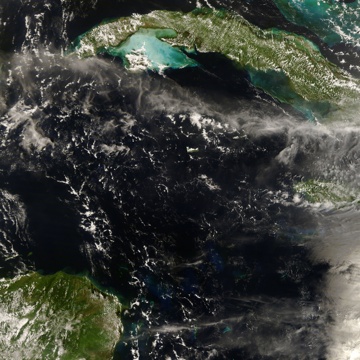
Hurricane Gustav turned out to non-calamitous to the United States. Its greatest fury was focused on western Cuba; the storm was a Category 4 hurricane, with sustained winds up to 150 mph, when it hit the island. A few days before the storm, I overheard a colleague who has been to Cuba more than once say that the government doesn’t mess around there when it comes to getting people out of harm’s way of a lethal-looking storm. An evacuation is ordered, and that’s it.
That doesn’t do much about property damage, though, and Gustav devastated the areas it struck. A country as rich and principled as ours can’t be caught aiding people ruled by a dictator, so the only help the United States has offered has been a relative pittance, $100,000, to be transmitted to aid groups rather than the Cuban government. Cuba’s answer: thanks but no thanks–if you really want to help, lift restrictions on travel and trade so we can buy what we need. (Yes–both the offer and response were political. But you have to wince a little when you read that the vast and boundlessly prosperous nation of East Timor kicked in $500,000 to help the Cuban recovery effort. I guess that’s what happens when you don’t have strong principles like ours.)
Cuba’s facing worse now: Another Category 4 storm, Hurricane Ike, is nearing. If it follows the forecast track, it may travel much of the length of the island (here’s something I didn’t know: Cuba is 700 miles long from Guantanamo in the east to Pinar del Rio, the province most heavily damaged by Hurricane Gustav, to the west; the greatest north-south width is about 100 miles; its area is 42,803 square miles, virtually identical to the state of Virginia. But I digress). The official word on Ike, quoted in the post title, is that it’s a powerful and dangerous hurricane.
Ike is expected make landfall in Guantanamo Province (but not in the immediate vicinity of our navy and detention base there), then spend 48 hours crossing from the northern to the southern coast, then curving back to the northwest and out over the Gulf of Mexico. With a path like that, it’s easy to imagine that it will affect virtually all of the island’s 11.4 million people.
I didn’t start out to write a plea for aid to Cuba–or for Haiti or the other islands and nations devastated by the recent storms–but how can one avoid it after you start to look at what’s going on. Donating to the agencies that might help is not as straightforward as going to the American Red Cross. But there are options:
The Canadian Red Cross, for one, is active in providing relief to Cuba and the rest of the Caribbean. It takes donations from us Yanks.
I also did come across a current list of U.S.-based agencies that take donations and operate in Cuba (see message 17 in the thread). Without having done any homework, they all sound reputable.
More later. (Oh, and that picture at the top: It’s a NASA image of Cuba after Hurricane Gustav passed. If you click on the image to look at the larger version(s), you can see the Isle of Youth off the southern coast, which was devastated by the storm. The milky turquoise color along the southern shoreline is sand stirred up the hurricane’s passage.)
Technorati Tags: cuba, hurricane, hurricane ike
